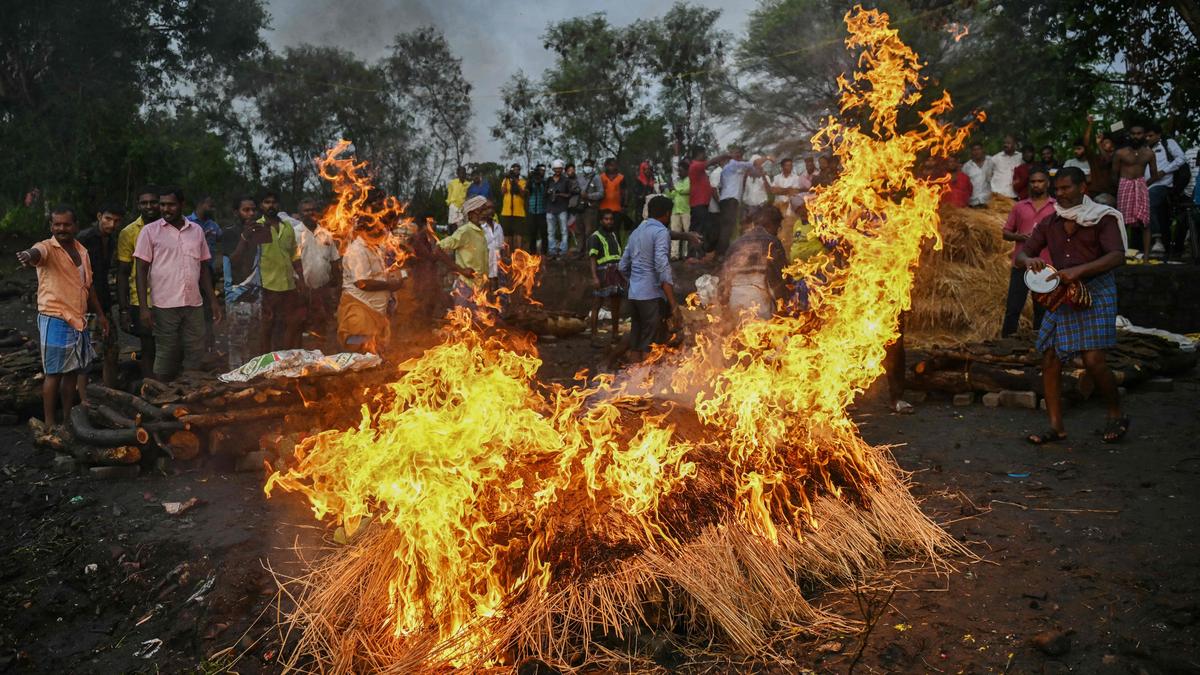
How is methanol procured and used as liquor? | Explained Premium
The Hindu
Illicit liquor tragedies in India due to methanol contamination highlight the need for stricter legislation and enforcement
The story so far: The Kallakurichi illicit liquor tragedy that has so far claimed more than 50 lives is entirely familiar in its cause, sequence of events, and aftermath. Such tragedies happen periodically across India in various States. Almost all the postmortem reports of the victims attribute the cause to methanol consumption.
Ethanol is legal liquor for consumption. It is produced biologically whereas methanol is produced from fuels such as coal in India. Molasses, which are a by-product of the sugar making process, form the starting material of distilleries that are often located close to sugar factories. They produce rectified spirit which is distilled further to produce edible extra neutral alcohol that in turn goes into making Indian Made Foreign Liquor, a lucrative cash cow for State governments. During ethanol production in responsible distilleries, methanol is also produced but is carefully removed since the processes are highly controlled.
Methanol is produced from coal and other fossil fuels. While ethanol can be made edible, methanol is poison. Even very low concentrations of methanol can be toxic, often fatal. However, it is needed to produce a range of products that are highly useful. Paints, for instance, can’t be produced without methanol.
Just like ethanol, methanol is a highly controlled substance. Rules in Tamil Nadu ensure the manufacturing, transportation and storage are all licenced, monitored and the quantity and quality audited.
In northern Tamil Nadu, much of the methanol used in industries is sourced from Andhra Pradesh. Ground reportage suggests the existence of a lucrative methanol pilferage racket operating enroute and at the end-user side as well.
It is possible that methanol formed during the crude distillation process, adopted by the bootleggers at Kallakurichi, wasn’t removed, leading to methanol poisoning. However, the widespread nature of contamination and scale of the Kallakurichi tragedy suggests that methanol was procured and supplied separately, either as part of a brew or alone in a diluted form. Given that illicit liquor has been produced and distributed widely here over many months, possibly years, methanol use was not a one-off event that happened only this fateful week at Kallakurichi.
Most of the hooch tragedies in India occur due to methanol contamination in liquor. Street wisdom, or belief rather, may well be that the relatively inexpensive but potent poison that is methanol, if diluted enough, could provide the same effect as ordinary liquor — a state of intoxication or ‘kick’ for consumers.

Indian Forest Service (IFoS) officer R. Gokul, who was suspended by the State government in connection with a case filed in the Supreme Court seeking permission to denotify 443 acres of HMT forest land, besides writing a letter to the CBI, has reportedly admitted to his mistake and submitted an unconditional apology.





















 Run 3 Space | Play Space Running Game
Run 3 Space | Play Space Running Game Traffic Jam 3D | Online Racing Game
Traffic Jam 3D | Online Racing Game Duck Hunt | Play Old Classic Game
Duck Hunt | Play Old Classic Game









